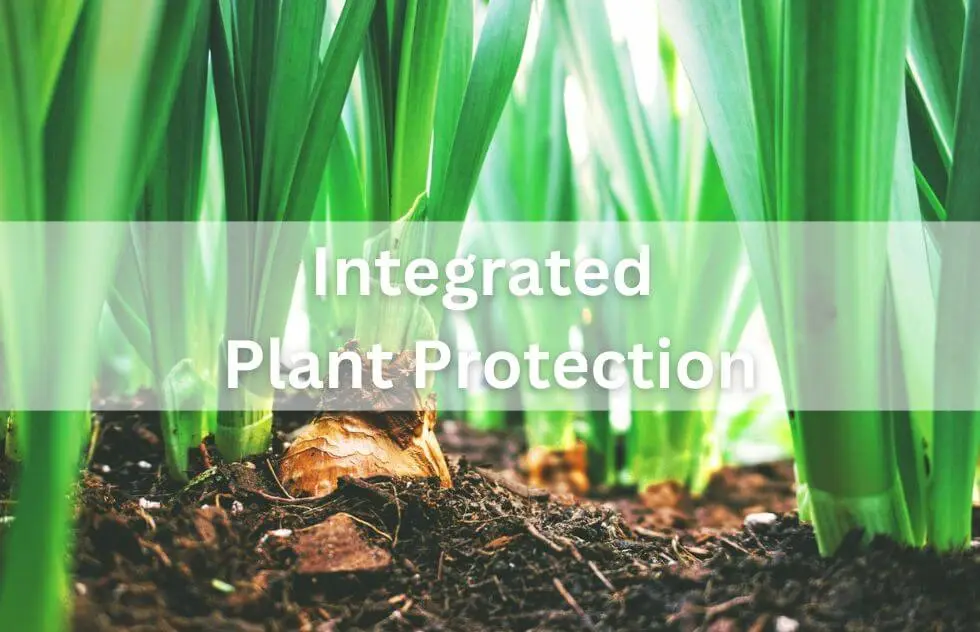Modern agriculture faces major challenges: climate change, increasing pest infestations, and the growing demand for environmentally friendly farming methods all call for sustainable solutions. One such solution is Integrated Plant Protection. This concept combines various methods to keep crops healthy, control harmful organisms, and at the same time protect the environment and beneficial insects. But how exactly does this strategy work?
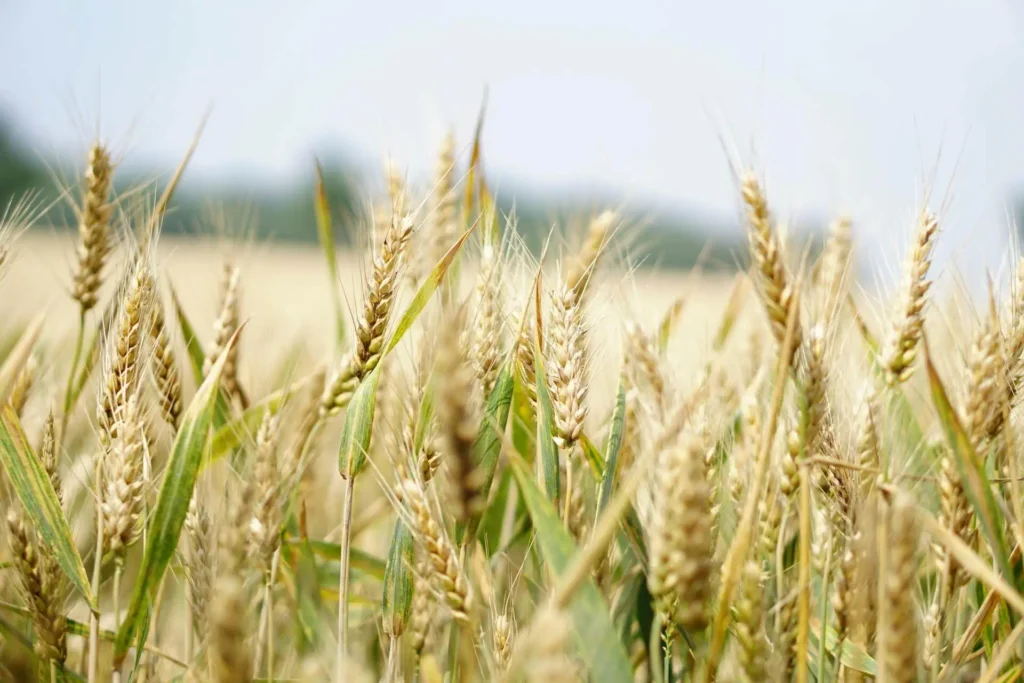
What is Integrated Plant Protection?
Keeping plants healthy without unnecessarily harming the environment – that is the goal of integrated plant protection.
Agriculture faces a dual challenge: on the one hand, crops must be protected from pests, diseases, and weeds to ensure high yields and secure food production. On the other hand, awareness is growing about the ecological consequences of excessive chemical pesticide use. Integrated plant protection offers a solution.
Definition and Basic Principles
Integrated plant protection is a sustainable approach that combines various methods to protect crops from damage. It follows the principle: As much as necessary, as little as possible. This means that chemical pesticides are only used when all other measures are insufficient.
The key principles of integrated plant protection are:
- Prevention instead of control: Healthy plants and resistant varieties reduce the risk of pest and disease infestations.
- Monitoring and early detection: Regular inspections help identify problems early and address them in a targeted way.
- Use of biological and mechanical methods: Beneficial organisms, soil management, and physical barriers play a central role.
- Targeted, reduced use of chemical agents: When chemical pesticides are necessary, they are applied consciously, precisely, and in minimal quantities.
Why is Integrated Plant Protection Important?
Traditional agriculture often relies heavily on the use of pesticides and herbicides to minimize crop losses. The consequences, however, are severe:
- Resistance development in pests and pathogens: Many insects and disease-causing organisms have developed resistance to pesticides, leading to the need for increasingly stronger chemicals.
- Residues in food and the environment: Chemical sprays can contaminate soil, water, and food, with long-term effects on human health and the natural world.
- Loss of biodiversity: Beneficial organisms such as bees, butterflies, and soil microbes are harmed by pesticides, destabilizing entire ecosystems.
- Impact on human health: Long-term exposure to pesticides can pose health risks, particularly for farmers and consumers.
Integrated plant protection addresses these issues by striving to balance effective crop protection with environmental sustainability.
A Look at the History of Integrated Plant Protection
Integrated plant protection is not a new concept—its roots go back to the mid-20th century. In the 1950s and 1960s, the widespread use of chemical pesticides became popular, leading to the first reports of environmental and health issues. Scientists and farmers began developing alternative strategies that considered the long-term ecological and economic impacts.
Since the 1980s in particular, awareness of sustainable farming methods has steadily increased. Today, many countries have legal regulations that promote integrated plant protection as the preferred strategy. This approach is now firmly established not only in organic farming but also in many conventional agricultural operations.
Future Outlook: Where Is Integrated Plant Protection Headed?
With the growing challenges of climate change and global food security, integrated plant protection is becoming increasingly important. New scientific findings and technological innovations are enabling more precise and environmentally friendly applications. At the same time, pressure is mounting on governments and companies to support sustainable solutions and tighten regulatory requirements.
Integrated plant protection is not a short-term trend but an essential strategy for the future of agriculture. By combining environmental protection, yield security, and economic efficiency, it represents a vital step toward sustainable farming.
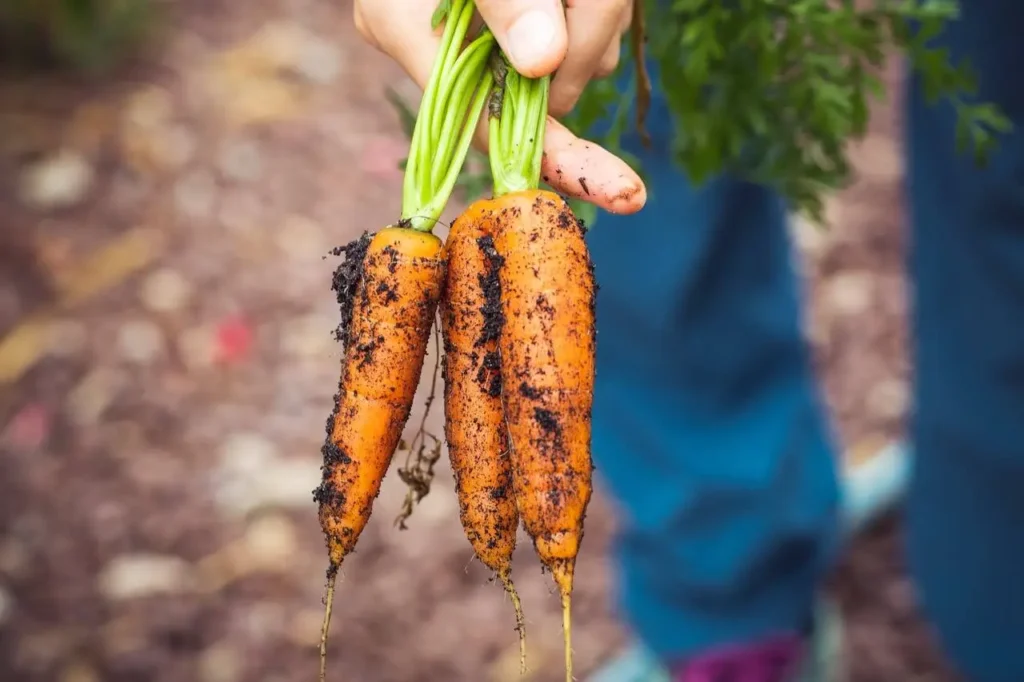
The Principles of Integrated Plant Protection
The success of integrated plant protection lies in a holistic approach that combines various measures.
Integrated plant protection is not a single action but a well-thought-out strategy aimed at maintaining healthy plant growth and keeping harmful organisms at an economically acceptable level. It optimally combines biological, physical, mechanical, and chemical methods to enable sustainable farming.
The core principle is: Prevention before intervention. Instead of relying solely on reactive control, problems are avoided from the outset. If pest infestations or plant diseases do occur, environmentally friendly methods are tried first. Chemical treatments are only used when other measures are insufficient.
Integrated plant protection is based on four fundamental principles: prevention, monitoring, biological and mechanical control, and targeted chemical measures as a last resort.
Preventive Measures: The Best Defense Is Good Preparation
Why Prevention Matters:
A healthy plant is more resistant to pests and diseases. That’s why plant protection starts even before sowing or planting. The goal of preventive measures is to minimize infestation from the outset, reducing the need for later interventions to a minimum.
Key Preventive Measures:
- Crop rotation and mixed cropping
Growing different types of crops in regular rotation prevents the unchecked spread of specialized pests and pathogens.
For example, alternating cereals with legumes can improve soil quality and reduce pest pressure. - Resistant and robust varieties
Plants that have been bred for resistance to specific diseases are less vulnerable to infestation.
Using native and locally adapted varieties also contributes to more stable cultivation. - Healthy soils as the foundation for resilient plants
Soil life and structure play a central role in the growth of healthy crops.
Practices such as organic fertilization, mulching, and targeted compost use promote an active soil biology that can suppress harmful organisms. - Encouraging natural enemies of pests
A diverse landscape with hedgerows, flower strips, and nesting sites supports beneficial insects like ladybugs, parasitic wasps, and birds.
Avoiding broad-spectrum insecticides helps preserve the balance of these helpful organisms.
Monitoring and Diagnosis: Detecting Pests and Diseases Early
Why Monitoring Is Essential:
The earlier a problem is identified, the more precisely it can be addressed. This not only saves costs but also protects the environment.
Monitoring Methods:
- Regular field inspections
Visual checks of leaves, stems, and roots help detect early signs of diseases or pest infestations.
Special attention should be paid to plants showing symptoms such as leaf discoloration or feeding damage. - Use of traps and sensors
Pheromone traps and yellow sticky traps enable early detection of pest populations.
Digital sensors and drones collect environmental data and can detect hotspots of infestation faster than manual inspections. - Using weather and infestation forecasts
Weather data helps predict the likelihood of disease outbreaks (e.g., powdery mildew during humid conditions).
Forecast models can assist farmers in taking preventive measures in a timely manner.
Biological and Physical Control Methods: Natural Solutions Against Pests
Why Biological and Mechanical Methods Are Preferred:
Natural pest control methods help maintain ecological balance by protecting beneficial organisms and avoiding pesticide resistance.
Methods of Biological Pest Control:
- Use of beneficial organisms
- Ladybug larvae feed on aphids.
- Parasitic wasps lay their eggs in pest insects like the European corn borer.
- Nematodes control soil-dwelling pests such as wireworms.
- Natural plant protection products
- Microorganisms like Bacillus thuringiensis specifically target caterpillars of butterflies.
- Neem oil inhibits the development of many harmful insects and is biodegradable.
- Physical Protection Measures:
- Nets prevent infestation by harmful insects without the need for chemical agents
- Mulch layers reduce weed spread and protect the soil from erosion.
- Hot water treatments can kill weeds without the use of chemicals.
Chemical Measures as a Last Resort: Use Minimally and Precisely
Why Chemical Pesticides Should Only Be Used in Emergencies:
Pesticides and fungicides are effective, but they carry risks for both the environment and human health. That’s why integrated plant protection follows the principle: chemical agents should only be used when all other methods are insufficient.
Principles of Responsible Use:
- Targeted application instead of blanket treatment
Treatments are carried out only where there is an actual infestation.
Modern spraying technology allows for more precise dosing. - Choosing selective active ingredients
Broad-spectrum insecticides also kill beneficial organisms—so selective products are preferable.
For example, there are fungicides that specifically target powdery mildew without harming soil bacteria. - Resistance management
Regularly rotating active substances prevents pests from developing resistance.
Combining different control methods reduces the risk of resistance forming.
Conclusion on the Principles of Integrated Plant Protection
Integrated plant protection relies on the combination of various measures to combat pests and diseases without placing unnecessary strain on the environment. Prevention, monitoring, and biological control are prioritized, while chemical agents are used only as a last resort.
This sustainable approach helps ensure long-term agricultural productivity while reducing the ecological footprint. Thanks to new technologies and innovative methods, integrated plant protection is becoming increasingly efficient—a crucial step toward more environmentally friendly agriculture.

Benefits of Integrated Plant Protection
Why is this approach worthwhile for farmers, consumers, and the environment?
Integrated plant protection offers a range of benefits that go far beyond basic crop protection. By balancing economic, ecological, and health-related aspects, it provides a sustainable solution to the challenges of modern agriculture. While conventional methods often focus on short-term fixes, integrated plant protection emphasizes long-term stability, environmental compatibility, and economic efficiency.
The key benefits are explained in more detail below:
Reduced Pesticide Use: Less Chemistry, More Sustainability
Why is reducing pesticide use important?
Chemical plant protection products may act quickly and effectively against pests and diseases, but they carry significant risks:
- They can contaminate soil, water, and air.
- They harm beneficial insects like bees and ladybugs.
- They can leave residues in food.
- Pests and diseases can develop resistance over time.
How does integrated plant protection help?
- It relies on preventive measures that often make pesticide use unnecessary.
- Mechanical and biological methods reduce the need for chemical treatments.
- When pesticides are needed, they are used in a targeted and minimal way.
- For example: The use of parasitic wasps against the European corn borer has reduced pesticide use by up to 70% in many fields.
Protecting the Environment and Promoting Biodiversity
How does conventional plant protection affect the environment?
Widespread use of pesticides negatively impacts soil, water, and wildlife. Residues enter rivers and lakes, disrupting ecological balance. Herbicides also destroy important habitats for insects and birds.
What are the benefits of integrated plant protection?
- Targeted promotion of natural predators reduces the need for insecticides.
- Crop rotations and mixed cropping support healthy soil life.
- The use of environmentally friendly methods protects beneficial insects like bees, bumblebees, and butterflies.
- For example: Farmers who plant flower strips along field edges promote pollinators and increase yields at the same time. Studies show that such measures can help preserve up to 30% more insect populations.
Long-Term Preservation of Soil Fertility
Why is healthy soil so important?
Soil is the foundation of agriculture. However, pesticides and monocultures can degrade soil quality by reducing its fertility:
- They harm soil life (e.g., earthworms, microorganisms).
- They reduce nutrient availability.
- They increase the risk of erosion.
How does integrated plant protection support soil health?
- Crop rotation prevents soil depletion.
- The use of compost and mulch improves soil structure.
- Mechanical weed control replaces the use of herbicides.
- For example: Farmers who adopt integrated plant protection often report higher humus content and improved water retention in the soil, which positively impacts yields in the long term.
Cost Efficiency: Economic Benefits for Farmers
Aren’t chemical pesticides the cheapest solution?
In the short term, chemical sprays can offer a quick and inexpensive fix. However, in the long run, the hidden costs are significant:
- Pest resistance that requires the continual development and use of new products.
- Environmental damage that later demands costly remediation.
- Increased plant vulnerability due to the loss of beneficial soil microorganisms.
Why is integrated plant protection economically beneficial?
- Lower spending on chemical products: Since usage is significantly reduced, farmers save money on pesticides and fungicides.
- Stable yields from healthy soils: Plants that grow under optimal conditions from the start tend to produce better harvests.
- Incentives and support programs: Many countries offer financial support for environmentally friendly farming practices.
- For example: An organic farm using integrated plant protection was able to cut its crop protection costs by 40% while achieving higher yields thanks to natural pollinators.
Health Benefits for Consumers and Farmers
What health risks are associated with chemical pesticides?
- Pesticide residues in fruits and vegetables can be harmful to health over the long term.
- Farmers who regularly apply pesticides have a higher risk of respiratory illnesses and other health problems.
- Chemicals can spread through air and water, reaching nearby fields or residential areas.
How does integrated plant protection support health?
- Fewer pesticides mean fewer residues in food.
- Natural methods like biological pest control pose no health risk to humans.
- Environmentally friendly alternatives such as organic fertilizers or mulch improve quality of life in agricultural regions.
- For example: Studies show that food from farms using integrated plant protection often contains lower pesticide residues than conventionally grown products.
Future Resilience: Adapting to Climate Change
Why will integrated plant protection become even more important in the future?
Climate change leads to:
- Longer periods of drought, making plants more vulnerable to pests.
- The spread of new pests and diseases due to rising temperatures.
- Extreme weather events that make traditional plant protection methods more difficult.
How can integrated plant protection help?
- Resilient crop varieties are better equipped to cope with changing climate conditions.
- Biological pest control can adapt flexibly to new pest species.
- Healthy soils retain more water, helping crops withstand droughts more effectively.
- For example: In southern France, winegrowers were able to maintain stable yields despite rising temperatures by using heat-resistant grape varieties and biological pest control methods.
A Sustainable Path for the Future of Agriculture
Integrated plant protection is a win-win situation for farmers, consumers, and the environment. Fewer pesticides, healthier soils, and stable yields show that sustainable crop protection makes sense not only ecologically but also economically.
With the growing challenges of climate change and increasing consumer awareness, integrated plant protection will play an even more important role in the future. Tomorrow’s agriculture must be sustainable, resilient, and environmentally friendly—and integrated plant protection points the way forward.
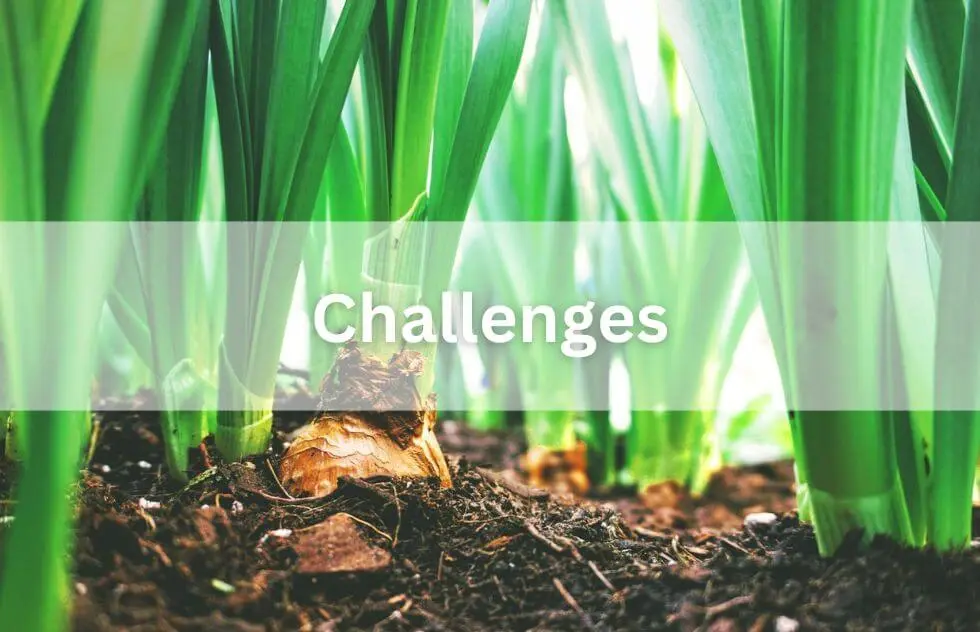
Challenges and Limitations of Integrated Plant Protection
Despite its many advantages, there are challenges that make consistent implementation difficult.
Integrated plant protection is a sustainable concept that protects the environment and offers long-term economic benefits. However, its implementation is not always straightforward. Technical, economic, and organizational obstacles can lead farmers to continue using conventional methods.
This section highlights the key challenges and limitations of integrated plant protection in order to provide a realistic view of its practical application.
High Demand for Knowledge and Training
Why is knowledge essential?
While conventional plant protection often relies on standardized pesticide use, integrated plant protection requires a deeper understanding of:
- Crop rotation and mixed cropping
- Biological control methods
- Soil management and promotion of beneficial organisms
- Monitoring techniques for early pest detection
Farmers must be able to identify harmful organisms and plan preventive measures effectively. This requires regular training, continuing education, and the exchange of experience—which are not always easily accessible.
Challenge:
- Many regions lack qualified advisory services and training opportunities.
- Smaller farms in particular often struggle to acquire the necessary knowledge.
Solution:
- Better government support for training and advisory services
- Digital platforms and apps for quick identification of pests and diseases
Greater Time Commitment for Farmers
Why is integrated plant protection more time-consuming?
- Monitoring and diagnosis require regular field inspections. Farmers need to check their fields more frequently to detect early signs of infestation.
- Mechanical methods like hoeing or manual weeding are more labor-intensive than the broad application of herbicides.
- Targeted use of beneficial organisms requires careful planning, as they must be released precisely when pests are at a specific developmental stage.
Challenge:
- Many farmers lack the manpower to carry out labor-intensive methods on a regular basis.
- Seasonal labor is hard to find and adds to operational costs.
Solution:
- Development of automated monitoring technologies, such as drones or AI-powered pest analysis.
- Support for shared use of equipment and machinery that multiple farms can operate together.
Economic Pressure and Uncertainty
Why is economic pressure a problem?
Transitioning to integrated plant protection can initially involve higher costs, especially for:
- Investing in new technologies (e.g., pest monitoring sensors)
- Mechanical weed control, which is more labor-intensive than chemical methods
- Biological control measures such as promoting beneficial organisms, which take time to show results
Many farmers face economic pressure to make short-term profitable decisions rather than prioritize long-term ecological benefits.
Challenge:
- The market often rewards high yields and short-term cost reductions, not sustainable production methods.
- A lack of financial incentives for farmers who want to operate sustainably.
Solution:
- Improved support programs for sustainable agriculture
- Tax benefits or subsidies for farms implementing integrated plant protection
- Consumer education to increase willingness to pay for sustainably produced food
Dependence on Weather and Climate Factors
Why does weather play a crucial role?
Many integrated plant protection measures are highly dependent on weather and climate conditions:
- Beneficial insects require specific temperatures to reproduce effectively.
- Heavy rainfall can wash away biological plant protection agents or hinder mechanical weed control.
- With climate change, extreme weather events like prolonged droughts or heavy rainfall are increasing, which can reduce the effectiveness of some integrated methods.
Challenge:
- Pests adapt more quickly to changing climate conditions than their natural enemies.
- Extreme weather makes it harder to predict pest populations through monitoring.
Solution:
- Development of more resilient plant varieties that can adapt to climate changes.
- Use of weather data and AI-powered forecasts to determine the best timing for biological pest control measures.
Legal Regulations and Market Access
Why are legal frameworks important?
Many countries have strict regulations regarding the use of plant protection products—but sustainable alternatives are not always sufficiently supported.
Problems in the current system:
- Some effective biological plant protection products are not yet approved, or their approval involves high costs.
- Farmers who switch to integrated plant protection often receive little to no financial incentives or premiums.
- Retail chains and large food producers pressure farmers to deliver high volumes and flawless products—something that is often easier to achieve using chemical treatments.
Challenge:
- Lack of incentives and bureaucratic hurdles make it difficult to promote integrated plant protection methods.
- Biological alternatives are sometimes harder to obtain than conventional pesticides.
Solution:
- Legal support for sustainable farming practices and faster approval processes for biological plant protection products.
- Restructuring food markets to promote transparency and support sustainable agriculture.
Acceptance and Awareness in Agriculture
Why do many farmers continue to rely on conventional methods?
Integrated plant protection requires a shift in mindset and new approaches.
Some farmers have had negative experiences with biological methods in the past, especially when results weren’t immediate.
The use of beneficial insects or mechanical weed control is sometimes perceived as less reliable and predictable than chemical solutions.
Challenge:
- The success of integrated methods is not always immediately visible, as they focus on long-term soil improvement and natural cycles.
- In regions where chemical plant protection has been the norm for decades, there is often a lack of role-model farms that demonstrate the benefits of integrated approaches.
Solution:
- More demonstration projects and success stories from farmers who have successfully implemented integrated methods.
- Better advisory services and hands-on support to help farmers overcome fears about making the transition.
Overcoming Challenges and Advancing Integrated Plant Protection
Integrated plant protection has the potential to be a sustainable and economically viable alternative to conventional crop protection. However, its implementation comes with technical, economic, and organizational challenges.
With better education, financial incentives, and new technologies, these obstacles can be overcome. The future of agriculture will largely depend on how effectively sustainable methods are put into practice and supported.
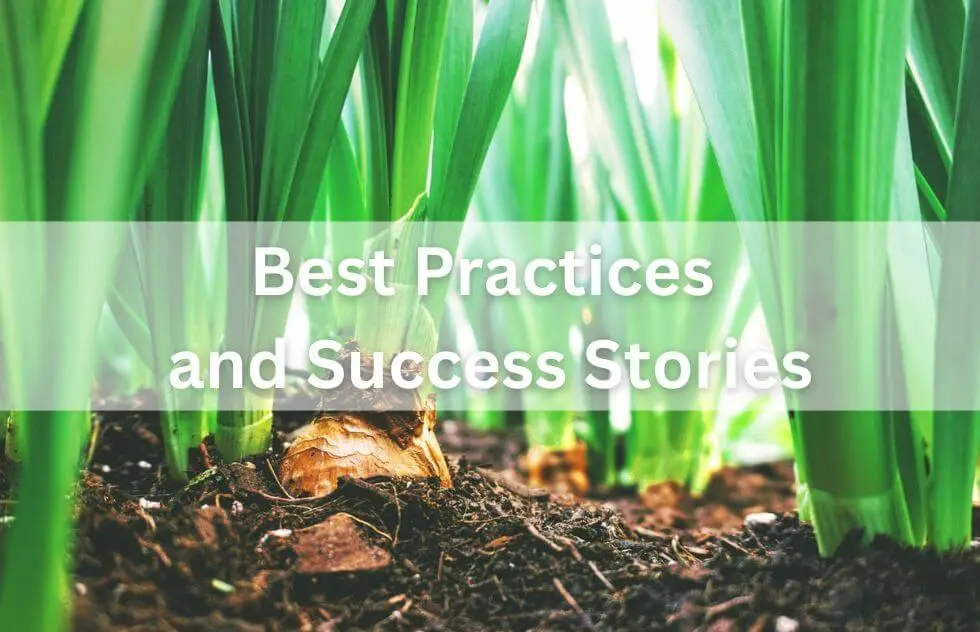
Best Practices and Success Stories
More and more farms are turning to integrated plant protection — with great success.
In practice, integrated plant protection has proven to be not only theoretically sound but also highly effective in real-world agriculture. Many farms have stabilized their yields, protected the environment, and reduced costs over the long term through sustainable plant protection strategies.
This chapter presents successful methods and concrete examples that demonstrate how integrated plant protection is being implemented across different types of agricultural operations.
Successful Methods in Integrated Plant Protection
Farmers use a wide range of measures to keep their crops healthy. Some of the most effective best practices include:
Crop Rotation and Intercropping as Natural Pest Control
- Best Practice: A grain farm in Bavaria consistently uses a three- to four-part crop rotation including legumes, rapeseed, and cereals. This strategy not only reduces pests but also improves soil fertility.
- Success: The farm was able to reduce chemical crop protection by 50% while maintaining stable yields.
Use of Beneficial Insects for Pest Control
- Best Practice: An apple orchard in South Tyrol specifically uses parasitic wasps and ladybug larvae to combat aphids. Additionally, flower strips are planted to attract beneficial insects.
- Success: By encouraging natural predators, the farm reduced insecticide use by over 70% without experiencing yield loss.
Smart Technologies for Pest Monitoring
- Best Practice: A vegetable producer in the Netherlands uses digital pest traps equipped with sensors. These collect real-time data on pest populations, which can be accessed via an app.
- Success: Targeted use of biological plant protection products led to a 30% reduction in crop protection costs and more efficient resource use.
Mechanical Weed Control Instead of Herbicides
- Best Practice: An organic farm in France uses a combination of hoes, flame weeding, and mulching systems to control weeds without herbicides.
- Success: The farm maintained yields at conventional levels without relying on chemical herbicides, while also significantly improving soil quality.
Organic Soil Management for Healthy Plants
- Best Practice: A vineyard in California uses compost, green manure, and mulch to improve water retention and soil fertility.
- Success: The improved soil structure has made the vines more resilient to drought stress, and yields have remained stable.
Success Stories from Different Countries
Integrated plant protection is being successfully practiced around the world. Here are some examples from various regions and crop systems:
Germany: Integrated Plant Protection in Potato Farming
A farmer in Lower Saxony reduced chemical crop protection by 60% through a combination of adapted crop rotation, ground cover, and targeted pest monitoring. At the same time, he improved soil fertility and the storability of the potatoes.
Switzerland: Sustainable Grain Cultivation with Fewer Fungicides
In Switzerland, many farms rely on resistant grain varieties, precision farming, and soil-conserving cultivation methods. One example farm was able to reduce fungicide use by 40%—without yield losses—by using weather and plant health forecasting.
Italy: Biological Plant Protection in Viticulture
A winemaker in Tuscany uses natural fungal preparations and copper alternatives to manage powdery mildew and other fungal diseases. He also relies on precise pest monitoring to take early action. The result: fewer chemical treatments, improved soil quality, and higher-quality wines.
India: Plant Protection with Natural Extracts in Rice Cultivation
A rice farmer in India uses neem oil and fermented plant extracts to repel pests. As a result, he was able to almost completely eliminate synthetic pesticides and improve the health of soil organisms.
USA: Automated Weed Control in Vegetable Production
A farming operation in California uses AI-controlled weeding robots that precisely remove weeds without harming crops. The result: 80% less herbicide use and greater efficiency in weed management.
Success Factors for Integrated Plant Protection
What do all these successful examples have in common?
- Combination of different measures
No farm relies on a single strategy. Instead, they combine multiple sustainable methods to keep crops healthy. - Early detection and monitoring
Technological tools such as drones, sensors, and apps help identify pests and diseases at an early stage. - Long-term thinking over short-term profit
Sustainable crop protection strategies require more planning upfront but pay off over time through stable yields and lower costs. - Tailored approach based on location and crop
Successful farms adapt their strategies to local climate conditions, soil types, and pest pressures. - Cooperation and knowledge sharing
Farmers who collaborate with research institutions, advisors, or other farms benefit from the latest insights and best practices.
Integrated Plant Protection Is Achievable and Successful
The success stories from different countries and farming systems show that integrated plant protection is not just a theoretical concept—it’s a proven and practical approach.
What these farms have in common:
- They rely on a smart combination of prevention, monitoring, and targeted control.
- They reduce pesticide use and opt for biological and mechanical alternatives.
- They use modern technologies to monitor and manage their measures.
The message:
Integrated plant protection works—and it can deliver both ecological and economic benefits. The more farmers adopt sustainable methods, the greater the positive impact on the environment, biodiversity, and the future of agriculture.
Integrated plant protection is not only sustainable, but also economically successful—and it offers a viable solution for the future of farming.
The Key to Sustainable Agriculture
Integrated plant protection is more than just a method—it is a sustainable concept for the future of farming.
The combination of prevention, biological alternatives, and the targeted use of plant protection products ensures healthy crops while protecting the environment. There are challenges, but many real-world examples show that the transition is worthwhile.
The protection of our soils, water resources, and biodiversity depends on how we manage plants in the future—integrated plant protection points the way toward responsible agriculture.
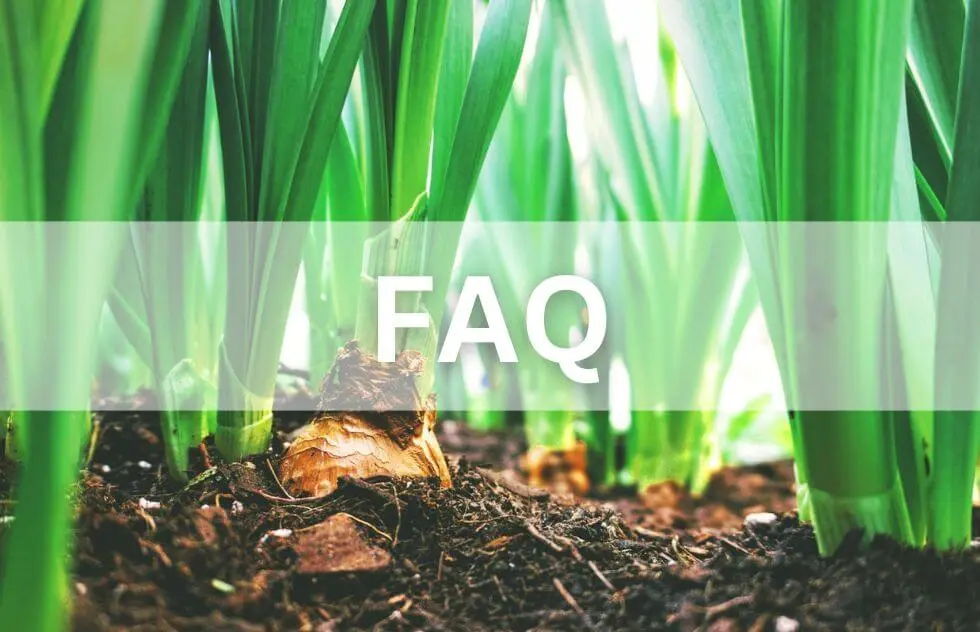
FAQ – Frequently Asked Questions About Integrated Plant Protection
What is the difference between conventional and integrated plant protection?
While conventional plant protection often relies heavily on chemical products, integrated plant protection combines preventive, biological, mechanical, and—when necessary—chemical methods to sustainably control pests.
Can home gardeners use integrated plant protection?
Yes, intercropping, natural pest predators, and resistant plant varieties are suitable for home gardens as well. Chemical products should only be used in exceptional cases.
How can you tell if a farm uses integrated plant protection?
Certifications such as the GlobalG.A.P. label or organic seals indicate that sustainable plant protection strategies are being implemented.
Can integrated plant protection be combined with organic farming?
Yes, many integrated plant protection methods are part of organic agriculture. However, organic farming completely avoids the use of synthetic plant protection products.
This post is also available in Deutsch.

